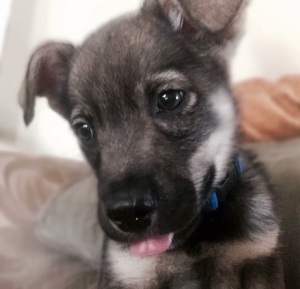If you have hired a trainer and are ready to start on a fun and rewarding adventure with your dog, congratulations! Here are some tips that will help you get the most out of your dog, your time and your money.
1. BE HONEST
This is so extremely important. Your trainer can’t help you if you omit things or exaggerate. One of the first things I ask people is how many minutes a day does their dog gets structured exercise. I do not ask this because I want to scold or judge. I ask because it is vital to creating a training package that is going to work for your home and your dog. If you haven’t walked your dog in two months your trainer needs to know that. If, for instance, you tell your trainer that your dog goes on a thirty minute walk every day rain or shine, then the trainer may not focus on creating a doable exercise program for your home. That would be a very big mistake because if you really do not walk your dog every day, or if you do but not for a full thirty minutes, you will miss out on a crucial component of behavior and you will not get the results you want.
The same is true for other things, too. If you have used physical corrections with your dog but tell the trainer you haven’t, he or she can not show you a more effective way to stop unwanted behavior. Your trainer should not be there to judge you and read you the riot act of all the mistakes you have made. But they do need to know what has been going on so they can show you new ways that will help you more effectively work with your dog. I think being honest with yourself and your trainer is the number one way you can get the most out of your training.
2. BE WILLING TO CHANGE
Over the years, I have had a handful of clients who had an idea about their dog or their method of training immovably set in their minds. When this is the case, there really is nothing a trainer can do to help you. Most people call a professional in to help because things are not working. I remember one time, years ago, I had a client who would not change his unhealthy feeding routine. Even though he was not getting the behaviors he wanted from his dog he refused to believe that it had anything to do with how he interacted with him. Here is a secret you should know. Trainers don’t change your dog. Your dog is going to always be who he/she is. The only thing a trainer can help you do is change the way you interact with your dog. That is really the secret to training. Please be willing to set aside your ideas and emotions long enough to be receptive to another way.
Under this same category, don’t argue with your trainer. Long before your trainer gets to your door you should have done your homework on their methods and style. Once you have decided on a style and trainer you are comfortable with, be open. If you spend 30 minutes arguing with them about why you free feed and don’t intend to stop, you are not getting your money’s worth and it is not a good use of either yours or the trainer’s time. Of course, if they get there and their style is not what you thought, or you feel your dog is not in safe hands, it is completely appropriate to end the session and find a new trainer.
3. DON’T BE OFFENDED
Good trainers should not be out to make you feel bad or guilty about yourself or your dog. That being said, there will likely be things your trainer can point out that you were not aware of. There is nothing more awkward for a trainer than seeing an issue that is sensitive to talk about. A good example of this is fighting among family members. Constant fighting in the home has a very negative effect on dogs. If during the training session your trainer notices that you and your spouse fight every few minutes about who’s fault it is that the dog pees on the rug, they need to be able to tell you what they see. Please don’t be offended by their assessment. They are there to help you and your dog. A good trainer will be willing to get past the awkwardness of addressing such situations for the good of your family.
4. DO YOUR HOMEWORK
This is so important! I only have one hour a week with my clients. That alone is not enough to change behavior. Your trainer should set up a clear and doable schedule for you to practice the things you have learned. Progress will only happen if you stick with this. And, if for some reason you didn’t do your homework, again, be honest about it. Consider this example: If your trainer comes back and no progress has been made from your last session, your trainer might think the techniques are not working if you say you diligently worked with the dog every day. If in reality you only worked with the dog once or twice, the methods may be working just fine, but there hadn’t been enough time and practice to reflect that. Your trainer may then switch techniques, essentially starting over and losing valuable time that you are paying for.
5. DON’T FOCUS ONLY ON THE NEGATIVE
Nothing shuts down the training process faster than someone who only sees the negative. You should tell your trainer when things are not working or don’t feel right, but you should also be noticing the improvements no matter how small. We all know that person who can find the one dark cloud in an otherwise sunny sky. Talking with these people can make you quickly feel exhausted and depressed as well. Your dog is no different. If all you can see is that they don’t walk as well as the neighbor’s dog, or they don’t learn as fast as your old dog, no amount of training is going to help you. I often tell my clients that I can’t fix a bond between the human and dog. If you have called in a trainer as a last resort and have the idea that if it doesn’t work you’re getting rid of the dog, it is likely no one can help you. More than once, I have heard someone say in the first five minutes of being in their home, “I’m just sick of this dog. If he doesn’t change we are getting rid of him.” At that point your trainer may as well just walk out and save you the money because change takes time, patience, dedication and a strong bond.
You will need a strong enough bond with your dog that you can handle setbacks. I got a call a few weeks ago and the woman told me that if the dog got in the trash one more time, the husband was taking him right to the pound. I was very honest with her and said it was too late for training. Not too late for the dog, but too late for the husband. He did not like the dog, didn’t want to put money into training, and was just waiting for one more mistake to justify getting rid of him. Dogs, and humans alike, will always make mistakes. Even your trainer will make mistakes. Mistakes are part of life and if they are a deal breaker for your relationship with your dog, the best thing to do is be honest and find the dog a safe loving home that is willing to focus on the positive things.
Bonus Tip:
DON’T WAIT UNTIL IT’S TOO LATE!
This goes along with the last tip. You don’t have to have a problem to call in a trainer. My favorite cases are people who just adopted a dog and simply want to get the most out of their relationship and start their dog out on the right foot. There is no “issue” yet so we talk about troubleshooting, we play games that are bond-building and fun! We teach commands right the first time so they don’t become a battle. Please don’t wait to call a trainer until you are so frustrated with your dog that you can’t take it anymore.
Training is a fun a wonderful thing to do with your dog. I hope these tips will help you get the most out of your time and money. Go out and enjoy time with your dog today!









